Sudden Summer Storm Kills 21 In Southwestern Iran

Heavy rains and subsequent flash floods in three cities of Iran’s southwestern Fars province left at least 21 dead on Friday while a search operation is ongoing for several missing people.

Heavy rains and subsequent flash floods in three cities of Iran’s southwestern Fars province left at least 21 dead on Friday while a search operation is ongoing for several missing people.
People in the cities of Darab, Neyriz, and Estahban and about 10 of their surrounding villages in the Fars province were affected by floods.
Hossein Darvishi, the CEO of Red Crescent Society of Fars Province, said 74 people were rescued from the flooded areas.
Estahban’s governor, Yousef Kargar, criticized the province’s meteorological organization for not issuing any warning about the precipitation.
In response to this criticism, the Meteorological Organization of Fars Province said it announced on Wednesday evening, July 20, the possibility of showers and thunderstorms for Friday.
In March 2018, a flash flood in the province led to the death of 44 people.
The director of Crisis Management of the province’s governorate, Khalil Abdollahi, said that at least 15 cars were also stranded in the flood.
Iran has been suffering from drought for at least a decade and this year officials have been warning of a further decrease in precipitation. However, Iran’s metrology department had warned about possibly heavy seasonal rainfall across the country. The dangers of flash floods have been exacerbated by the widespread construction of buildings and roads near riverbeds.
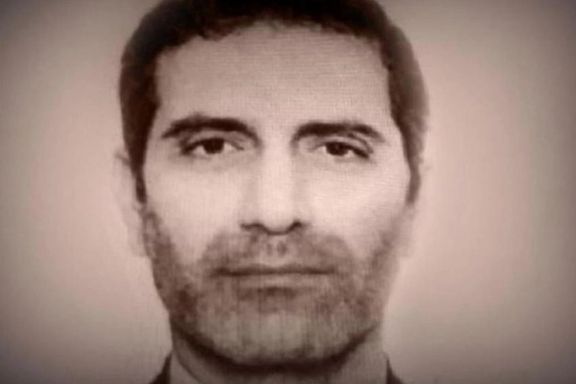
A court in Brussels has temporarily stopped Belgium from extraditing Assadollah Assadi, an Iranian diplomat sentenced to 20 years in jail on a terrorism conviction.
Darya Safai, an Iranian-born member of the Belgian parliament, released a document by the Brussels Court of Appeal on twitter on Friday evening showing the decision.
Following numerous complaints after the Belgian Parliament ratified a controversial prisoner swap treaty with Iran on July 20, the court ordered that Belgium be “provisionally prohibited from releasing Assadi […] from the Belgian prison where he is serving a sentence of 20 years […] and transferring him to any foreign state whatsoever.”
Assadi is imprisoned for “attempted murder and involvement in terrorism” for his role plotting to bomb a gathering of the exiled opposition group Mujahedin-e Khalq Organization (MEK) near Paris in 2018.
After being rejected by the court of first instance in Brussels on Thursday, the opponents of the prisoner-swap deal with Tehran -- including victims who had registered as civil parties to the trial -- won their appeal on Friday.
Georges-Henri Beauthier, a lawyer acting for the National Council of Resistance of Iran – an umbrella organization with MEK as its main member, said that according to the order, any proposed release of Assadi be subject to “cross-examination before a judge”.
The court noted that the rights of the plaintiffs “could be irreparably violated” if Assadi were handed over to the Iranian authorities, without allowing the decision to be legally challenged and confirmed by a judge through an adversarial procedure – a hearing where both parties are present or represented by a lawyer. The ban will apply until such a hearing is held, the court added.
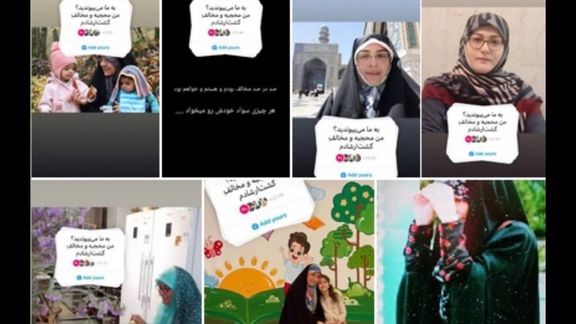
Many Iranian women who wear the hijab by choice have joined a new social media campaign this week against Iran’s hijab enforcement street patrols.
The new campaign began with an Instagram story by reformist activist and sociologist Mohammad Reza Jalaeipur on July 20 when he urged religious women who wear the hijab by choice to oppose the government's pressure on other women to comply with forced hijab.
Jalaeipur’s story went viral and tens of thousands of hijab-wearing women either shared his story or posted their own pictures with the hashtag “I wear the hijab but am against morality police patrols”.
The campaign which is a separate initiative from the anti-hijab campaign launched earlier this month by women’s rights activists has angered many hardliners.
Meanwhile, in a statement Friday, fifteen prominent Iranian figures who are usually referred to as “religious intellectuals”, some of whom have a background in Shiite seminaries condemned the government policy of compulsory hijab and suppression of women.
They also urged religious scholars to display solidarity with Iranian women and condemn forced hijab and tools of suppression such as morality police’s hijab enforcement patrols.
However, hardliner clerics did not mince words in their Friday sermons, calling those who campaign for freedom of choice traitors.
Jalaeipur, a practicing Muslim, has long been speaking against the government's policy of forcing all women to abide by the prescribed hijab rules and argues that imposing these violates the rights of the majority citizens who are against compulsory hijab.
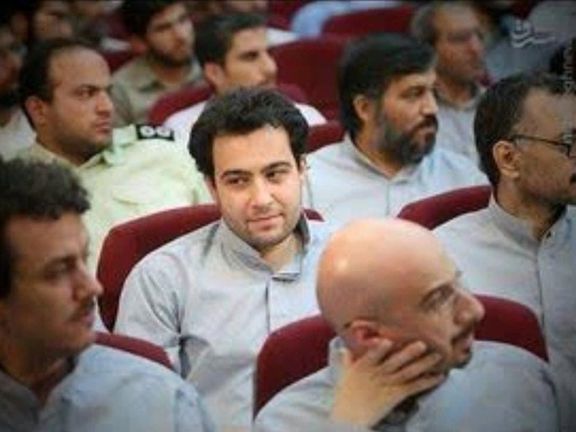
“When are you going to accept that the policy of compulsory hijab has failed and when exactly are you going to revise it?” Jalaeipur had challenged the authorities for a response in a Telegram post on June 27.
Iran’s government which is now fully controlled by hardliners has adopted a harsher than usual approach amid economic crisis and hardship for tens of millions. Government and military officials have warned the population a disobeying hijab rules and the morality police hijab enforcement patrols have detained many women, sometimes violently, on the streets.
The government also designated July 12 as the Hijab and Chastity Day this year and celebrated it with gatherings of women with full hijab at stadiums and other public venues.
Hundreds of thousands have supported the anti-hijab campaign on social media in the past few weeks. Many women have shot videos of themselves with uncovered hair in public places and posted the videos on social media with the ‘No2Hijab’ hashtag to display civil disobedience in reaction to the government’s harsh treatment of women for hijab.
Several activists have been arrested for their defiance of the hijab rules in July including Souri Babai-Chegini, a civil activist who published a video of herself removing her hijab, and Nazi Zandieh, a twenty-one-year-old student who also supported the anti-hijab campaign.
Officials usually insist that complying with hijab rules is “the demand of the majority of Iranians”.
Several surveys in the past few years, including a survey by Gamaan polling agency in the Netherlands, show that more than 50 percent of all Iranians and 75 percent of citizens in larger cities including the capital Tehran, oppose the compulsory hijab rules.
Results of surveys conducted by Iranian government agencies are usually not made public but according to Mehdi Nasiri, the former managing director of the hardline Kayhan newspaper, a survey carried out by the ministry of Islamic guidance in 2015 showed that more than 70 percent of Iranians did not agree with compulsory hijab.
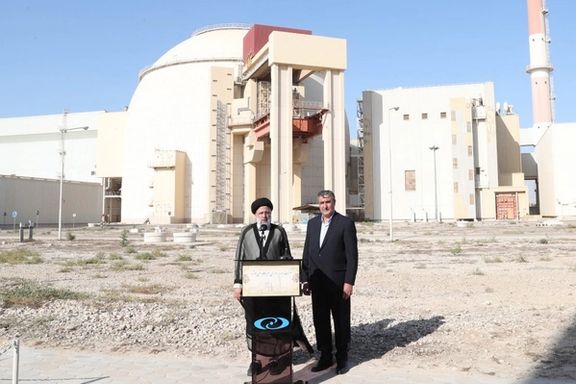
Iran's nuclear chief says construction projects for phase two and three of the Bushehr Nuclear Power Plant have accelerated since a few months ago.
Mohammad Eslami, vice president and the head of the Atomic Energy Organization of Iran (AEOI), said on Friday that since President Ebrahim Raisi made a visit to the site in January, the pace of the projects have changed thanks to the president’s emphasis.
Eslami did not elaborate on the details nor did he mention that Russia is responsible for the projects.
Vienna negotiations hit a bump in the road on March 5 when Russia asked that sanctions for its invasion of Ukraine should not impact implementation of a revived 2015 nuclear deal , the JCPOA. Moscow later said it received the needed assurances from the US.
The Bushehr reactor is not part of the current nuclear dispute between the West and Iran, as Russia handles the nuclear fuel cycle. Iran has been enriching uranium and stockpiling more purified fissile material at other facilities.
The United States had expressed reservations about Russia building the Bushehr nuclear power plant but finally relented in late 2000s, saying that as long as Russia controls the fuel, it did not see the project as a proliferation risk.
Russia commissioned Iran's first nuclear power plant, Bushehr, in 2011. It has one operational unit that generates 1,000 megawatts, providing less than two percent of the country’s electricity.
Iran is expanding the Bushehr reactor to generate more electricity as the country suffers from a chronic shortage of electrical power, with daily outages that cripple industry and anger home consumers.
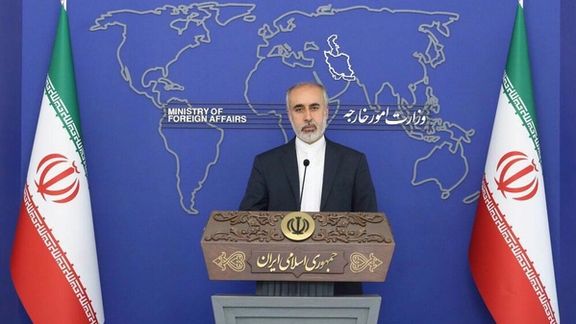
Iran says its relations with neighbors are not tied to the revival of the 2015 nuclear agreement (JCPOA) or permission from the United States.
Foreign ministry spokesperson Nasser Kanaani tweeted on Friday in English that the “false dichotomy between JCPOA, of which Iran unlike US remains a party, and good ties between Iran and its neighbors, including Russia, doesn't hide the fact that indecision of the unfaithful US is the main hurdle for a deal.”
He added, “Our neighborly policy is not contingent on JCPOA or US permission.”
Kanaani made the comments in reaction to remarks by US Special Envoy for Iran Robert Malley who said Iran either agrees to return to the nuclear deal and mend its relations with the world or stick to Russia and become more isolated.
Following a trip to Tehran by Russian President Vladimir Putin this week, Malley, said on July 19 that Iran "can opt for a position of relative dependency on Russia ... or it can choose to come back into the deal that’s been negotiated."
Echoing the comment, State Department Spokesperson Ned Price said on July 20 that Iran has a choice; siding with Russia, or choosing the path of diplomacy and taking up the deal that has been on the table for some time now, to have an economic relationship with other countries around the world.
On July 21, Foreign Minister Hossein Amir-Abdollahian said Iran is making efforts to strengthen relations with its Persian Gulf neighbors, UAE and Kuwait, noting that both countries will be sending their envoys to Tehran soon.

The top US Air Force general in the Middle East warned of increasing attacks by Iran-backed militias against the United States and its allies as tensions rise in the region.
As he stepped into his new role -- with responsibility for military operations in Iraq, Syria, Afghanistan, and across the region, Lt. Gen. Alexus Grynkewich told reporters at al-Udeid Air Base in Qatar on Thursday that such assaults could lead to a new escalation, while Russia and China are vying for economic and military influence across the Mideast.
“We’re in this position where we’re not under attack constantly, but we do see planning for attacks ongoing. Something will occur that unleashes that planning and that preparation against us,” Grynkewich said.
He also expressed concerns about Iran preparing to send Russia armed and unarmed drones to use in its war on Ukraine, saying it “is not a surprise … but it’s concerning.”
He also referred to Tehran’s rapidly growing stockpile of near-weapons-grade nuclear fuel in recent months, saying, “Everyone in the region is very concerned.”
His remarks came as the Syrian defense ministry said an Israeli strike killed three Syrian soldiers and wounded seven others near Damascus early Friday.
According to The Syrian Observatory for Human Rights war monitor the attack targeted an "Iranian weapons depot", an air force intelligence facility and a high-ranking officer's office, as well as a car near the Mezzeh military airport.
It said three Syrians were killed in military positions hosting air defense batteries in the perimeter of the Mezzeh airbase, as well as three non-Syrians and two “collaborators” of the Iran-backed Lebanese Hezbollah group at a workshop for manufacturing Iranian drones near the town of Sayyidah Zaynab, commonly known as Sitt Zaynab, 10 kilometers south of Damascus.